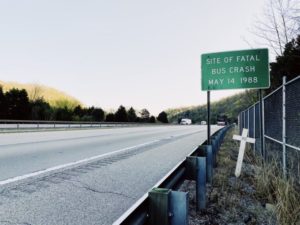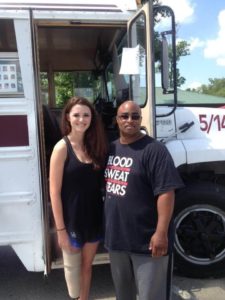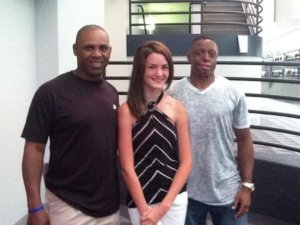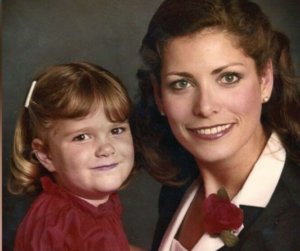
Less than 100 miles from my home in Lexington, Kentucky, a simple green sign marks the site of the deadliest drunk driving crash in U.S. history.
On May 14, 1988, a wrong-way driver with a blood alcohol concentration three times today’s legal limit crashed head-on into a bus carrying 67 people home from a day at King’s Island amusement park just over the Ohio border. Within moments of impact, the bus exploded into flames. Twenty-seven people died, including 24 children. Thirty-four others were injured.
The horrific events of that night shook Kentucky to its core and reverberated around the nation. Just six days after the crash, Kentucky Governor Wallace Wilkinson announced stricter enforcement of drunk driving laws and support for increased safety standards for buses. For Kentuckians, the tragedy became part of our consciousness.
Born just eight years after the collision, I grew up as laws and attitudes around drinking and driving underwent dramatic shifts. The school buses my peers traveled to and from school in had nine emergency exits – more than any other federal or state standard – as well as flame-retardant seats and fuel tanks surrounded by protective cages.

And although I knew the dangerous and deadly consequences of impaired driving, it wasn’t until a drunk driver changed my own life forever that I truly understood its impact.
In July 2010, a drunk boater ran over me at more than 60 mph as I sat on a jet ski on Lake Herrington in Danville, Kentucky. The impact left me with severe, lifelong injuries from head to toe, including a traumatic brain injury and the loss of my right leg.
I was 13 years old, the same age as many of the children who’d excitedly boarded a bus on the early morning of May 14, 1988. Like them, I never could have foreseen how one man’s choice later that day would end the life I knew.
I spent more than four weeks in the intensive care unit. During that time, I was cared for by a nurse who is married to Harold Dennis, a survivor of the Kentucky bus crash, and they shared their story with my parents.
I was still in the hospital when I decided I had to do everything I could to stop this violent crime from happening to anyone else. Soon after, I became involved in Mothers Against Drunk Driving, and a year later, I shared my story with the University of Kentucky football team. While I was there, I was invited back to hear someone else’s story the following night.

The man who shared his story was Harold Dennis, the Kentucky bus crash survivor whose wife had cared for me in the ICU.
I listened as he talked about that awful night, how the bus became a death trap, the darkness lit only by the flames. How he tried to get out of a window and felt a pull on his arms. How the next thing he knew, he was outside of the bus and on the ground. How the grass felt like knives on his badly burned skin. How in the hospital, he at last convinced a nurse to let him look in the mirror, and how he didn’t recognize the person looking back at him.
After Harold spoke, he introduced himself to me. He knew I wouldn’t remember our connection. But he remembered me.
Over the years, I met other victims and survivors of the Kentucky bus crash, including Quinton Higgins during a Nelson County Walk Like MADD. Quinton was 15 when he found himself trapped in the burning church bus, and for years he avoided talking about it. Today, he drives an old Ford school bus like the one he nearly died in. Taped to the backs of the seats are the names and photographs of those who died, and painted on the outside are the words “27 reasons not to drink and drive: May 14, 1988.”

Quinton brought the bus to Walk Like MADD events, and I remember the first time I stepped inside of it. As Harold said: “Our fate that night was determined by where we sat.” Quinton, too, had tried to climb out of a bus window; like Harold, a hand had pulled him from certain death. Both men carry scars from that night—scars both visible and invisible.
At the MADD National Conference in 2015, I met Karolyn Nunnallee, whose 10-year-old daughter, Patty, was the youngest to die in the bus crash. The death of Patty sealed Karolyn’s fate, too. Patty was a smart and precocious fourth grader who made straight As and dreamed of making a difference. When she didn’t get the chance, Karolyn made it her mission to change the world on her daughter’s behalf.
She did. Karolyn went on to become the National President of Mothers Against Drunk Driving and a relentless advocate for tougher DUI laws and improved bus safety standards. More than three decades later, Karolyn is still fighting to end drunk driving in America. She is still sharing Patty’s story in the hopes of sparing others.
Today, on the 33rd anniversary of the deadliest drunk driving crash in our nation’s history, we honor and remember all those lost that night and all of those left to live with what happened to them and in front of them. More than anything, I hope they and their families know we’re still fighting for them. We’re still saying their names. We’re still sharing their stories. It’s been 33 years, but we haven’t forgotten what happened. We haven’t forgotten you. You continue to make an impact.



